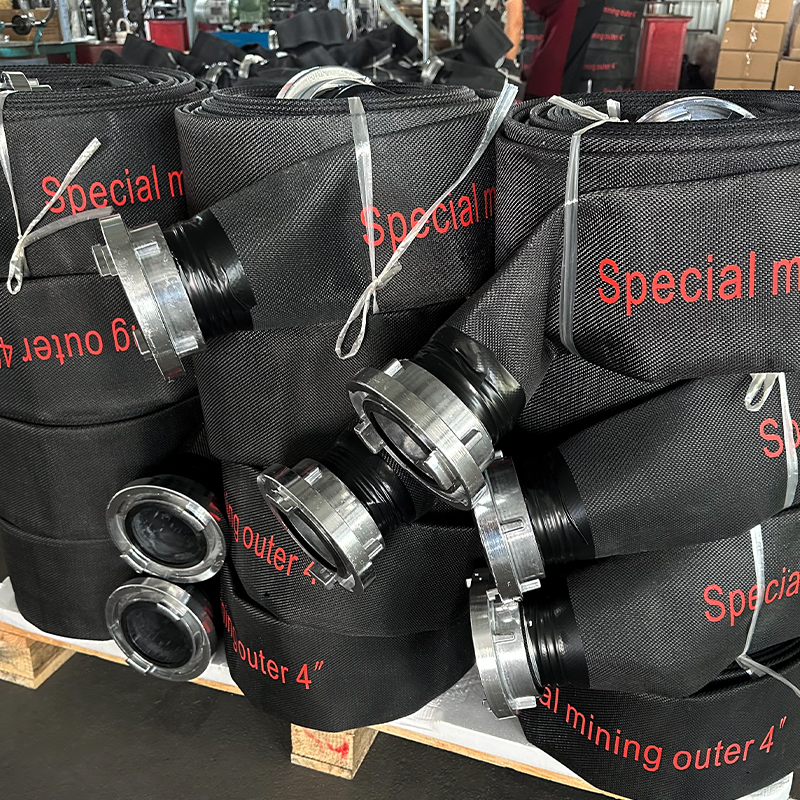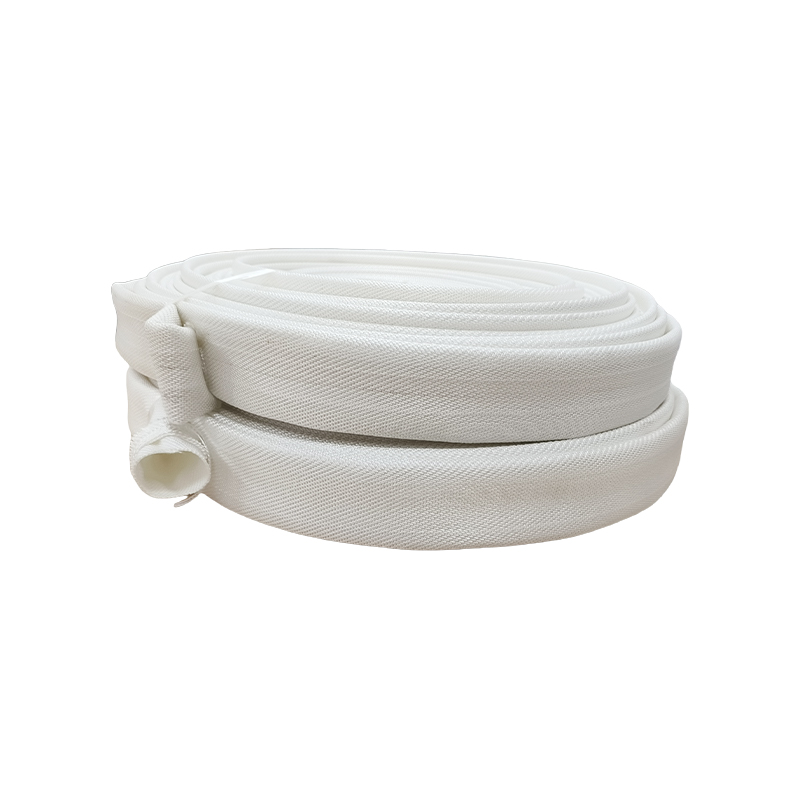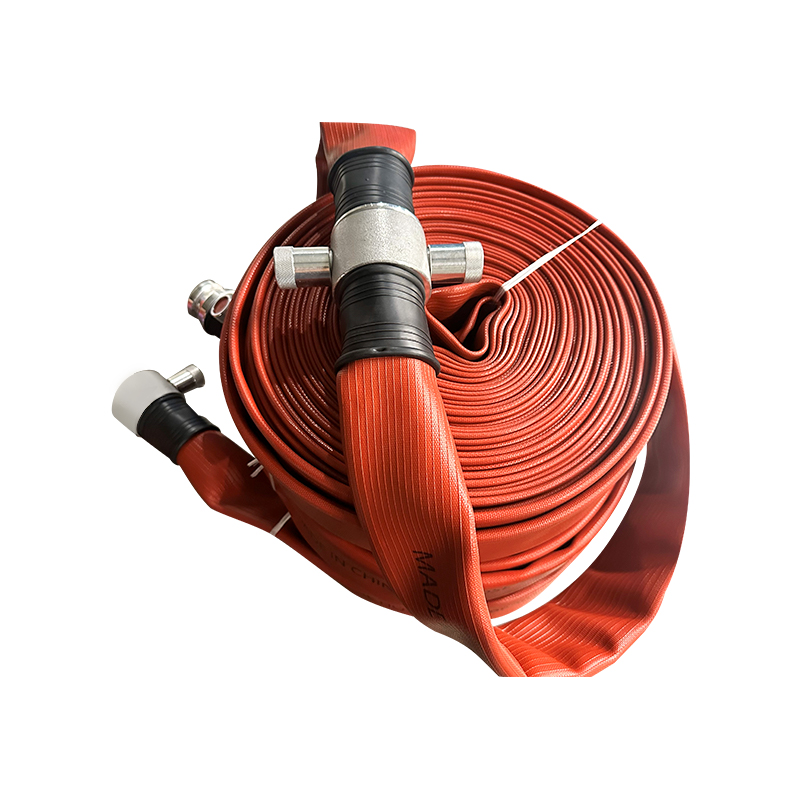Introduction to Mining Dewatering Hose Maintenance
Importance of Regular Maintenance for Mining Dewatering Hoses
Proper maintenance is essential for ensuring the longevity and optimal performance of your **mining outer dewatering hose**. These hoses are critical for managing water flow in harsh mining environments, and neglecting their care can lead to performance issues, costly repairs, or even failure. Regular maintenance can help prevent downtime, increase operational efficiency, and improve the overall safety of mining operations. Properly maintained hoses are more resilient to wear and tear, reducing the need for frequent replacements.
Common Issues That Affect the Longevity of Mining Dewatering Hoses
- Wear from abrasion and friction due to rough terrain
- Corrosion caused by exposure to harsh chemicals and high-pressure water
- Blockages from debris and sediment buildup inside the hose
- UV damage from prolonged exposure to sunlight
Regular Inspection and Cleaning
How to Inspect Your Mining Dewatering Hose Effectively
Regular inspections are vital for identifying any early signs of damage or wear. A comprehensive inspection should be conducted at least once a month, especially in high-use environments. The goal is to identify potential issues before they become major problems, allowing for timely repairs or replacements.
Visual Inspection Checklist
- Check for visible cuts, abrasions, or punctures along the hose surface
- Inspect fittings and couplings for wear or leaks
- Look for signs of bulging or kinks that may obstruct water flow
- Examine hose connectors for tightness and corrosion
How to Perform Pressure Testing
- Test the hose at operational pressure to ensure it maintains flow without leaks
- Monitor the hose during the test for any sudden pressure drops or unusual noises
- Inspect fittings and connections during pressure testing to ensure secure seals
Proper Cleaning Techniques to Prevent Blockages
Cleaning your **mining dewatering hose** is crucial for preventing blockages that can reduce its effectiveness. Over time, dirt, sediment, and mineral buildup can restrict water flow and cause the hose to degrade faster. A well-planned cleaning routine helps maintain optimal performance.
Cleaning Frequency and Best Practices
- Clean the hose after each use if it's exposed to large amounts of debris
- Flush the hose with clean water to remove sediment and minerals
- Use specialized cleaning solutions designed for hose maintenance if necessary
4" Water Hose Special Mining Outer Dewatering Outer Hose With Storz Coupling
Protective Measures to Extend Hose Life
Using Hose Protectors and Shields
**Mining dewatering hoses** are often subjected to harsh conditions, including abrasive surfaces and extreme temperatures. To protect the hose, using hose protectors and shields is highly recommended. These accessories help to shield the hose from external damage and reduce wear caused by friction, UV exposure, and impacts.
Why Protection is Necessary in Harsh Environments
- Reduces the risk of punctures and abrasions from sharp rocks and debris
- Prevents UV damage when hoses are exposed to sunlight for prolonged periods
- Protects the hose from extreme temperatures and chemical exposure
Types of Hose Protection Equipment
- Rubber hose covers for impact and abrasion resistance
- UV-resistant coatings to protect from sun damage
- Thermal sleeves for protection against heat damage
Storing and Handling Mining Dewatering Hoses Properly
Proper storage and handling are essential for maintaining the integrity of **mining dewatering hoses**. Improper storage can lead to kinks, cracks, and other forms of damage that shorten the hose's lifespan. When handling hoses, always ensure they are properly coiled and stored in a dry, cool area.
Safe Storage Methods
- Store hoses in a dry, temperature-controlled environment
- Avoid storing hoses in direct sunlight for extended periods
- Ensure hoses are properly coiled without any sharp bends or twists
How Improper Handling Can Shorten Hose Life
- Twisting or over-stretching the hose can cause internal damage
- Leaving the hose exposed to chemicals or sunlight can degrade the material
- Allowing debris to accumulate can lead to blockages and performance issues
Regular Maintenance Schedule for Mining Dewatering Hoses
Establishing a Maintenance Routine
To ensure your **mining dewatering hose** remains in optimal condition, it's essential to establish a routine maintenance schedule. Regular check-ups help identify potential issues before they become serious, extending the hose's lifespan and ensuring efficient operation.
How Often Should Maintenance Be Done?
- Inspect hoses monthly for signs of wear and damage
- Clean hoses after each use to prevent buildup
- Pressure test hoses quarterly to ensure proper performance
Maintenance Calendar Example
| Monthly | Inspect for visible damage |
| Quarterly | Pressure test for performance |
| Annually | Perform thorough cleaning and hose replacement check |
Professional Maintenance Services for Dewatering Hoses
While regular maintenance can be handled on-site, there are times when professional maintenance services are necessary. Professional services ensure that your **mining dewatering hoses** are inspected, cleaned, and repaired to the highest standards, providing peace of mind and extending the hose's lifespan.
When to Call a Professional
- If significant damage is detected during inspection
- When hoses are exposed to severe wear and tear
- If there are issues with hose pressure or water flow
Benefits of Professional Care
- Expert knowledge and specialized equipment for thorough inspections
- Timely identification and resolution of potential issues
- Guaranteed repairs and replacements, reducing downtime
FAQ
How often should mining dewatering hoses be inspected?
Mining dewatering hoses should be inspected at least once a month. However, frequent use or exposure to harsh environments may require more frequent inspections to ensure they are in good working condition.
Can mining dewatering hoses be repaired, or do they need replacement?
Minor damages such as small punctures or abrasions can often be repaired with specialized patches. However, extensive damage or degradation due to wear and tear may necessitate a replacement.
What are the common causes of dewatering hose failure?
Common causes of hose failure include abrasion, UV damage, chemical exposure, and internal blockages. Regular maintenance and proper handling can significantly reduce these risks.
Are there any specific materials that improve the durability of dewatering hoses?
Hoses made from materials such as rubber and polyurethane are often more durable and resistant to wear, UV damage, and chemical corrosion, making them ideal for mining environments.


 en
en
 عربى
عربى









